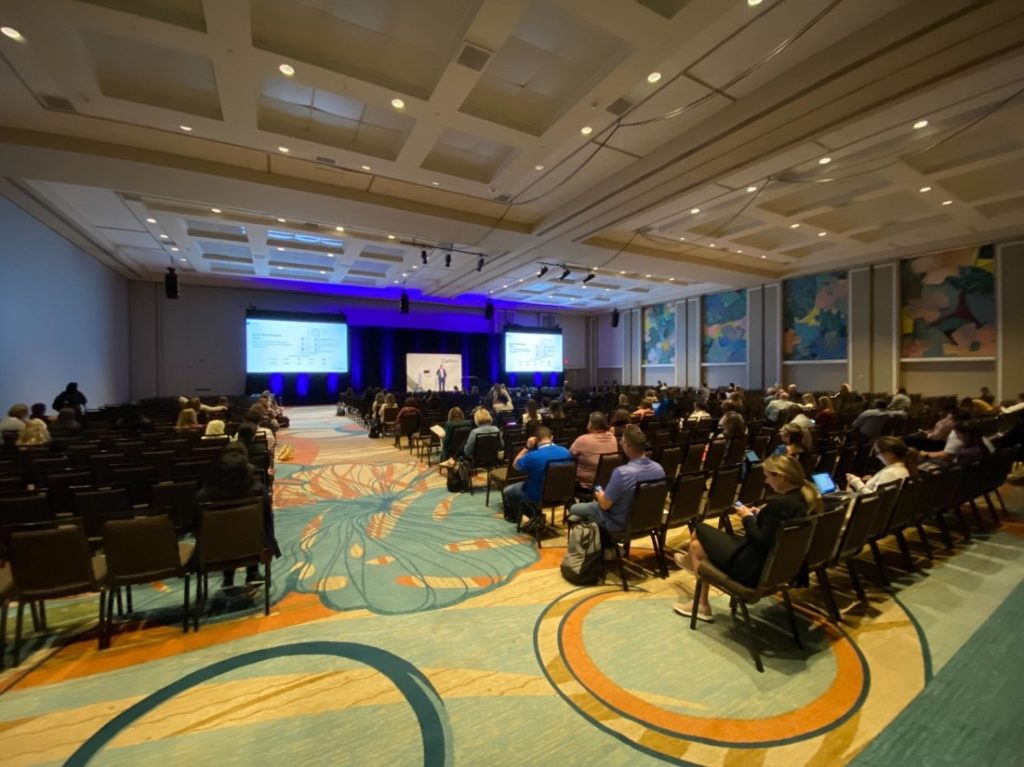Last week, a group of Harverians flew to Orlando, Florida to attend this year’s Gartner ReimagineHR Conference and connect with industry peers to explore innovative solutions for the challenges currently facing today’s HR leaders. Over the course of three days, we had insightful conversations with customers, prospects, and partners that only further reinforced the need for organizations to make better talent decisions, faster – the root of Harver’s mission.

Altogether, we connected with hundreds of people on-site, discussing their talent needs and overall outlook for 2023. As if these interactions weren’t rewarding enough, the conference experience culminated with a presentation from our very own Global Vice President of People Science, Ben Porr, highlighting Harver’s multi-year partnership with Valvoline and how we’ve helped the automotive giant achieve 300% hiring growth since the beginning of our engagement.
There were plenty of insights, perspectives and general takeaways to reflect on from the week, but three themes stood out among the rest:
Putting the candidate first. Gartner’s Dion Love gave a phenomenal presentation on the current age of HR, branding it as the era of “candidate agency.” So many roles can be performed remotely now, and with so many current job openings, organizations must put candidates at the center of their entire brand, let alone their hiring process. In addressing this power dynamic tilt, Harver provides bespoke Situational Judgement Tests (SJTs) that allow candidates to evaluate the prospective employer, just as the prospective employer evaluates them. These SJTs offer candidates a look at the feel of an organization, allowing them to explore on-the-job experiences while constructing a foundation of trust that what they’re seeing is what they’ll get — aligning with the three pillars of Dion’s talk.
Making the talent lifecycle an actual cycle. Enterprises know that some of the best hires come from within the organization; however, these companies seldom have a means of executing this internal mobility process at scale. Looking ahead, the talent management (TM) and talent acquisition (TA) processes will continue to merge harmonically, ensuring that the acquisition process feeds directly into a new hire’s career path development, once onboarded. While at the event, I spoke with one vice president of TA who now also oversees their company’s TM process, helping to provide pathways for newly onboard hires as they grow and develop. HR technology providers like Harver are working to provide solutions that nurture and support the candidate-employee transition. This is evidenced by Harver’s recent acquisition of pymetrics (where I spent the last 6 years!), conducted with the goal of offering robust TM solutions across development, mobility, and broader workforce insights.
Staying up to speed on AI regulation. At the conference, IBM’s Jane Wu and Kim Morick educated attendees on the many laws in development that aim to regulate use of artificial intelligence in Human Resources. Existing laws, and laws in development, are likely only the tip of the spear, as we anticipate (and welcome) more regulation to combat adverse impact and curb outdated, discriminatory practices. As we continue to use fairness as a guiding principle for building assessment and evaluation models, it will become increasingly important for HR leaders to know each state’s stance until federal regulations can be passed.
Didn’t get a chance to stop by our booth in Orlando or see Ben’s presentation? Reach out to schedule a demo today, and learn more about how Harver’s solutions (including assessments, hiring process automation, reference checking, and video interview capabilities) help organizations make better decisions across the talent lifecycle.


